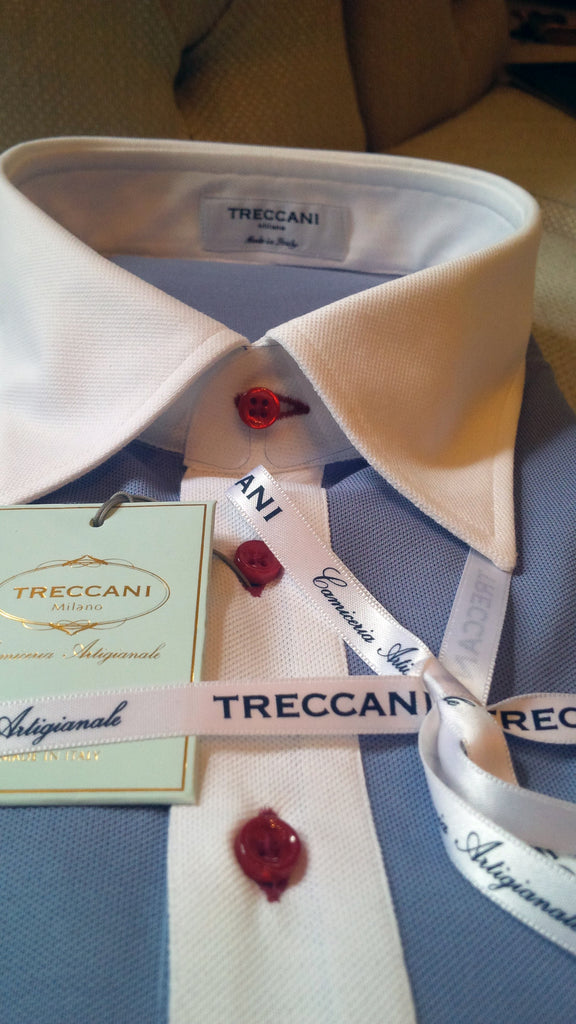The Polo Shirt Past is Revealed: Common To Buy Even Online Nowadays But Not in the early 20th Century ... Posted on 11 Aug 12:44
What may seem like an obvious wardrobe choice for a day of exercise was not so obvious back in the early 20th century. When it came to tennis long sleeve thick cotton shirts were the norm. That was the way it was done until one professional athlete had a vision . . .

In 1910 a tennis outfit was traditionally called a "tennis white" consisting of long-sleeved white button-up shirts, flannel trousers, and ties. This, as one can imagine, was extremely hot and uncomfortable. And so for a young tennis pro and Wimbledon winner, Rene Lacoste felt something had to be done.
Before the fame of Lacoste clothing Rene Lacoste had some success in the sporting world. He won Wimbledon in 1922 and was also the French seven-time Grand Slam tennis champion. While today he is most widely known as the man behind the great fashion line Lacoste. He should receive more recognition for his huge impact on the tennis and golf world. Rene Lacoste saw a problem and felt something had to be done. So he got rid of the long hot attire and opted for a shorter look.

Lacoste described it as “a white, short-sleeved, loosely-knit piqué cotton (he called the cotton weave jersey petit piqué) shirt with an unstarched, flat, protruding collar, a buttoned placket, and a shirt-tail longer in back than in front”. The polo shirt was born and Lacoste was the first to debut the polo at the 1926 U.S. Open Championship. It was later the next year that Lacoste received the nickname ‘crocodile’ from his American counterparts and thus he adopted the term and put it on his shirt, creating the Lacoste design we know today.
The term ‘polo shirt’ comes from where you might guess: the game Polo. In 1920 a Polo player, born and raised in Montreal, named Lewis Lacey had a similar idea and began putting a polo player on his shirt as a mark of his sport. He began manufacturing the shirt embroidered with the logo of a polo player. The design was actually created at the Hurlingham Polo Club near Buenos Aires. The ‘polo shirt’ was formerly referred to only the long sleeve button-down shirt but after the invention and acceptance of Lewis Lacey’s design the term ‘polo shirt’ became universal and spread not just to polo but to tennis and golf as well.
Lacoste changed the fashion and sporting worlds again when he retired from the sport in 1933 and took up with André Gillier, a friend and clothing merchandiser. Together they worked to market the new design to Europe and North America. I’m sure you can guess how successful that venture was.
By the late 20th Century the tennis shirt was adopted nearly universally as standard golf attire, and, as some may know, most tennis clubs today require the polo shirt as part of the standard uniform.
______
Another polo shirt trailblazer worth mentioning is Fred Perry who, in 1954, created his own polo shirt design. But he took the logo to the next level. He improved the design by adding a log that was stitched right into the shirt rather than ironed on the way Lacoste was currently doing it. This method became very popular among the teenagers at the time and was a solid competitor for Lacoste for a number of years.
While Lacoste, Perry and Gillier were the true creators of the polo shirt it wasn’t until Ralph Lauren, a New York native, made it that the name really began to stick and take over the sporting world from head to toe.
Sources:
https://en.wikipedia.org/wiki/Polo_shirt
http://www.polo-shirts.co.uk/guides/18/The_History_of_the_Polo_Shirt.html
http://journal.slowandsteadywinstherace.com/tag/jean-rene-lacoste/
http://theeyeoffaith.com/2014/06/04/photoblast-tennis-the-menace/eof-victorian-tennis-cabinet-photo/
http://www.unitedstatespolonetwork.com/ham-polo-club-est-1926-of-greater-london-a-historic-club-of-the-sport-of-princes-kings/



